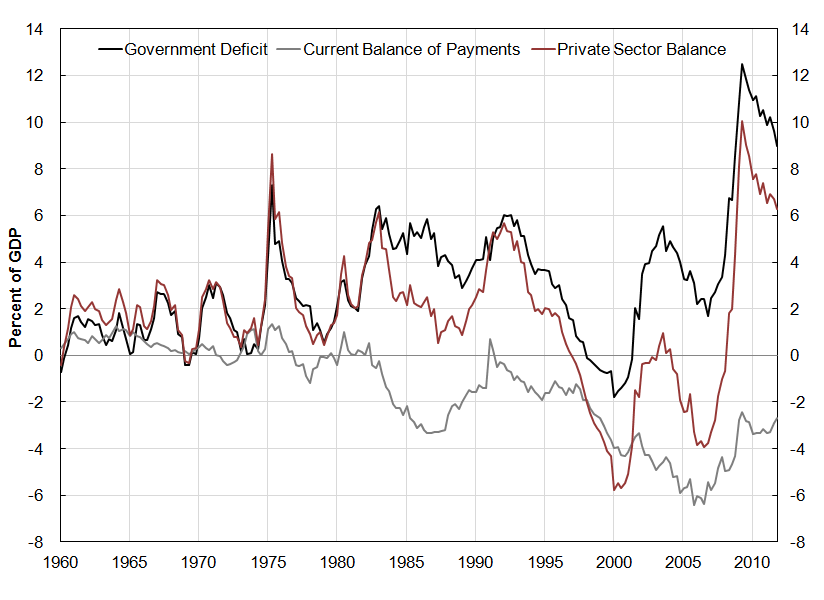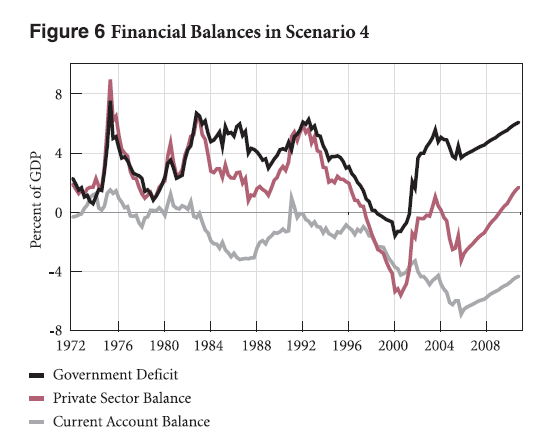Economists worry too much about the government’s deficit although they seem to not know about the private sector deficit.
Goldman Sachs’ chief economist Jan Hatzius came to know about the sectoral balances approach and called the difference between United States’ private expenditure and income in “The Un-Godley Private Sector Deficit”. He later included the sectoral balances approach in his forecasting models.
Here’s the sectoral balances for the United States using data from the Federal Reserve’s Z.1 Flow Of Funds Accounts Of The United States:
GDP appears in Table F.6 and sectoral balances in Table F.8 – as “Net Lending(+)/Net Borrowing(-)”. The above is using quarterly seasonally adjusted data. Easy work. Excel data is available at the Federal Reserve’s page here
It can be verified that
Private Sector Balance = Government Deficit + Current Balance of Payments
The red line is the private sector balance and is the difference between the private sector income and expenditure. When positive, the private sector is in surplus and when negative, it is in deficit.
For most of history having been positive (and back to being positive now), the private sector balance made a dramatic shift in the mid-1990s reaching as low as as -5.8% in Q1 2000 (and hence “private sector deficit”). This implied that before the recession, growth in the United States was driven by higher private expenditure relative to income. The flip side of this growth was that due to the Un-Godley private sector deficits, the budget went into a surplus while private indebtedness continued to rise.
This was enough to cause a recession in the early 2000s and the US government had to provide a massive fiscal stimulus to prevent a severe recession. The Federal Reserve also provided stimulus by keeping interest rates low but the private sector went into a deficit again – rushing to participate in a boom. The result of all this was the increase in the current account deficit of the United States to about 6.43% of GDP at the end of 2005 – hemorrhaging the circular flow of national income at a massive scale and cracks started to appear in the foundations of growth – as warned by a series of articles from the Levy Institute.
This appears a bit like Scenario 4 in a Levy Institute paper Debt And Lending – A Cri De Coeur by Wynne Godley and Gennaro Zezza from April 2006 – the “gloomiest variant” according to the authors – where a drastic fall in private expenditure relative to income induces a recession in the United States, reducing the current account balance dramatically and increasing the budget deficit (to eventually enough to become the central debate in US politics).
And it turned out that the private sector deficit quickly went into a surplus – faster than the scenario presented above because the private sector could not handle the rise in indebtedness. The fall in private expenditure relative to income also meant – as mentioned above – that the United States went into a deep recession – from which it is still recovering.

